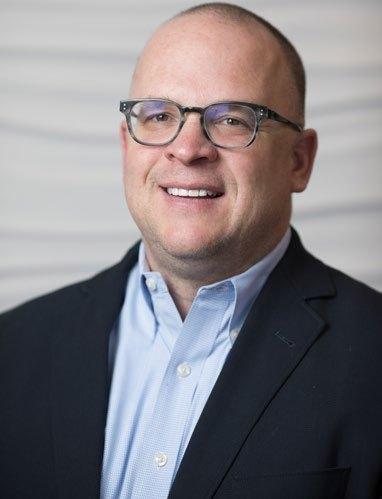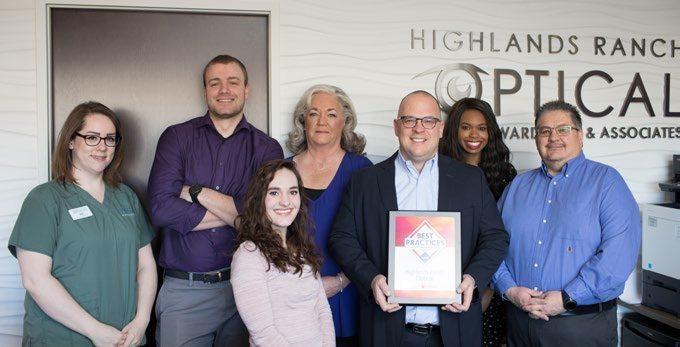Big. Small. New. Established. CooperVision’s Best Practices are different, but they share a common goal: To deliver exceptional care to patients, even in the face of increasing competition and challenges. Established in 2015, Best Practices recognizes and celebrates the visionary, innovative, and unexpected aspects of care delivery that best serve patients and advance the profession. In this series of articles, CooperVision’s 2018 class of Best Practices honorees will be highlighted, one by one, to uncover and share some unique aspects of their practices that help them thrive— with hope that other practitioners may garner inspiration to bolster their own success.
This month, Jeff Ward, OD, of Highlands Ranch Optical in Highlands Ranch, CO, shares some of his experiences, and what he’s most looking forward to as a Best Practice.

Q: What professional services do you offer at Highlands Ranch Optical?
A: We provide routine eye care, dry eye therapy, and the treatment of eye diseases such as glaucoma. I have significant experience in specialty contact lens fitting—orthokeratology and scleral lenses, and other difficult fits. These services have helped to set our practice apart. I opened the Neuro-Optometric Institute of the Rockies under the same roof, which provides sports vision and vision therapy services. We also offer vision rehabilitation for patients who have suffered traumatic brain injuries.
Q: Do you consider your practice to be innovative with technology?
A: Yes. We don’t have to be the very first to adopt new technology, but we don’t drag our feet. I attend as many industry meetings as possible, so I’m tuned into what is on the horizon. As soon as it is apparent a treatment is beneficial, I’m on it.
Q: Beyond technology, provide an example of something that makes your practice unique.
A: I believe in reinvesting into the practice to give our patients the best experience. Two years ago, we moved to a new office and tripled our square footage. I decided to design the interior to feel like a spa, not a sterile medial office. It’s contemporary, yet earthy and organic. I have patients tell me they normally hate going to the doctor, but they would spend the whole afternoon at our place.
Q: What are you most proud of with regard to your practice?
A: I’m proud that through specialty contact lenses and visual rehabilitation, we have a huge impact on patients’ lives. We have been at the forefront of myopia control with orthokeratology, which can produce amazing results. Sometimes, I don’t think we realize the psychological impact that poor vision can have on children. For example. I had a very young patient who was quickly becoming nearsighted. He was struggling in school, struggling to make friends and had even withdrawn from his parents. I prescribed Ortho-K and after only a month, his mom said, “I feel like I have a new son.” It was as if his personality had changed and it turned his whole life around.

Q: Tell us one lesson you have learned about staffing through your years in practice.
A: Always err on the side of overstaffing rather than understaffing. A lot of people talk about going the extra mile for patients, but that can be overwhelming and exhausting. So, you don’t have to go an extra mile to create great patient experience – just an extra inch. That’s easier to do when you have adequate staff, and all of those extra inches add up to a huge difference.
Q: What does bring a Best Practice mean to you?
A: The day I found out we were being recognized, I ran straight up to the front desk to share the news with everybody. It means a lot to us and has been a real morale booster. We know we have something to be proud of, and it validates all of our hard work.





